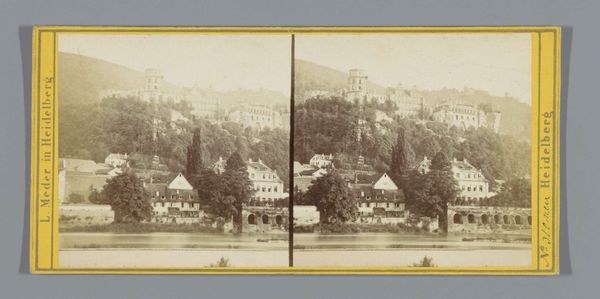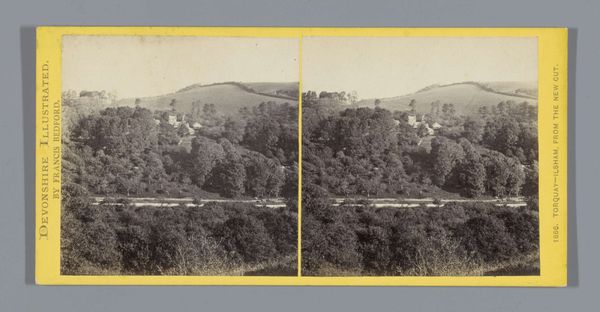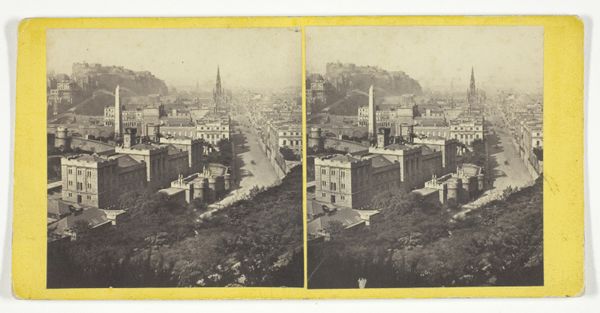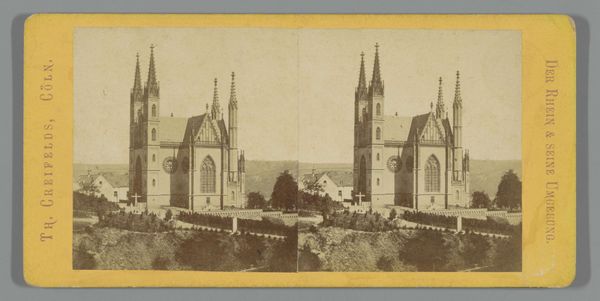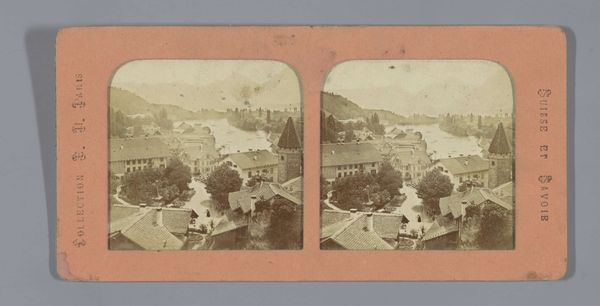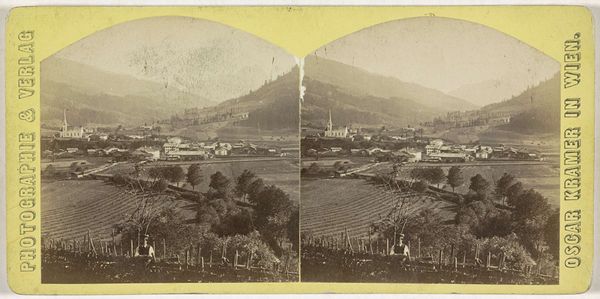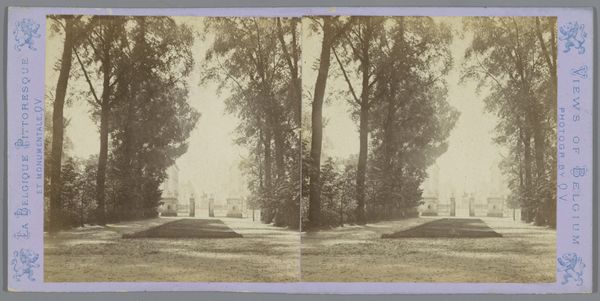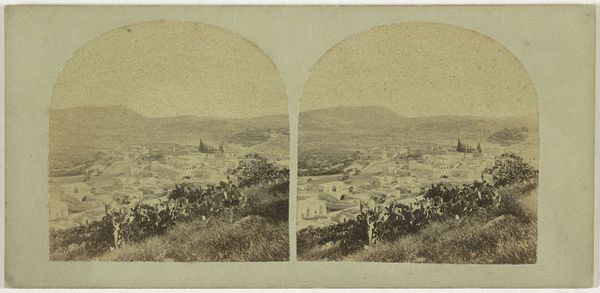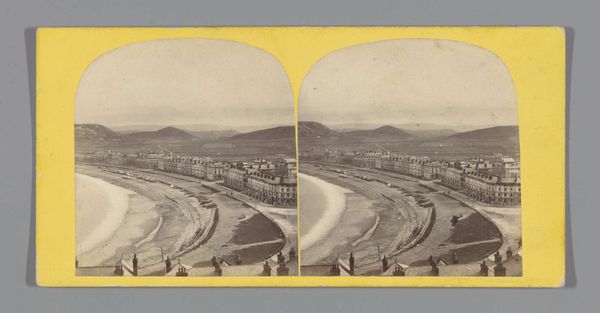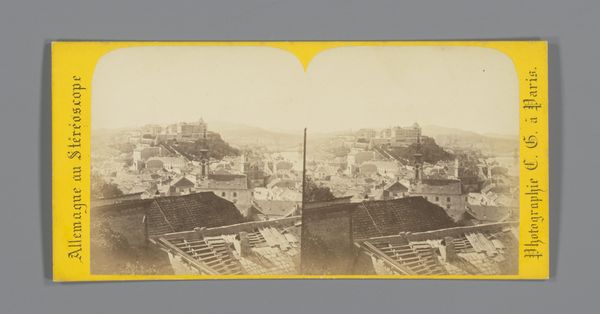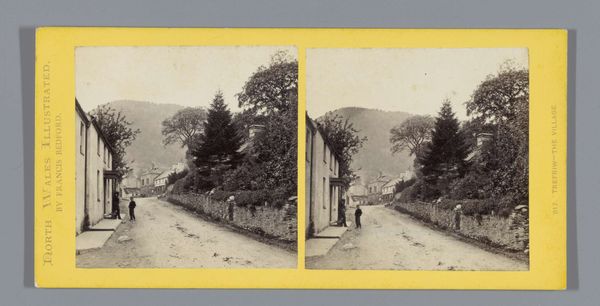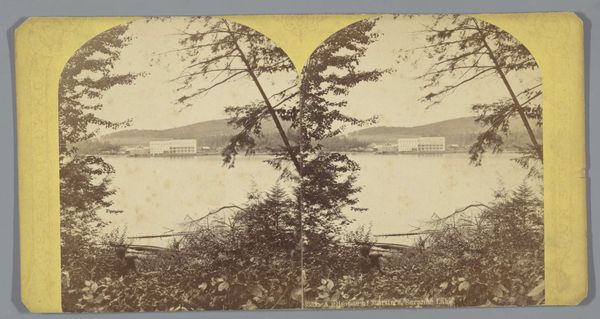
Dimensions: 7.6 × 7.7 cm (each image); 8.5 × 7.4 cm (card)
Copyright: Public Domain
Curator: This serene view is titled “Lucerne,” an albumen print crafted between 1850 and 1877. Adolphe Braun, a photographer prominent in 19th-century France, captured this cityscape. Editor: There’s a calmness to this piece, a softness enhanced by the albumen print. It makes the city seem like a dream, those church spires puncturing the horizon in a very precise yet ethereal way. Curator: Braun excelled in landscape photography, becoming quite renowned for his city views and his use of the daguerreotype process. Think about photography at that moment—a powerful tool for documentation but also shaped by artistic aspirations. Editor: Yes, photography as a medium was, and continues to be, constantly renegotiating its space between documentation, truth and, well, fabrication or artifice. Here, this very controlled vista overlooking the city with the spires in the background serves a precise aesthetic, one of progress, wealth and cultural pride of place. How complicit are such representations? Curator: Interesting question, particularly within the historical context. Remember that photography offered unprecedented access to scenes around the globe, enabling new perspectives on tourism, industry, and of course, colonialism. And consider how photographs also cemented cultural stereotypes, actively shaping socio-political dynamics of the time. Editor: Precisely, and Braun's decision to showcase this tidy, picture-perfect cityscape excludes the messy realities of urban life, erasing inequalities that must have existed then, as they still exist now. Curator: But that can also speak to his aspirations as an artist—to elevate the ordinary, perhaps—to suggest the enduring stability of the city. Pictorialism was also emerging around this time, further demonstrating how photography was mimicking the style of painting and incorporating fine art sensibilities. Editor: Or reflecting the desires and fantasies of a certain class. As a tool, photography offers access, sure. But access on whose terms and to what extent? We might do well to acknowledge that "serene view" also reveals as much by what it conceals. Curator: I think that is exactly the point. By engaging in an honest dialogue, we see how something as simple as a landscape photograph also becomes a cultural document and, maybe even, a subtle expression of power. Editor: Absolutely. We can bring new light to images we might easily glance over to see the underlying values and social structures they promote.
Comments
No comments
Be the first to comment and join the conversation on the ultimate creative platform.
